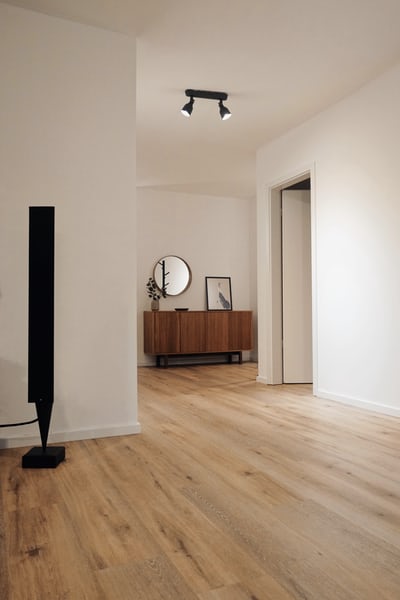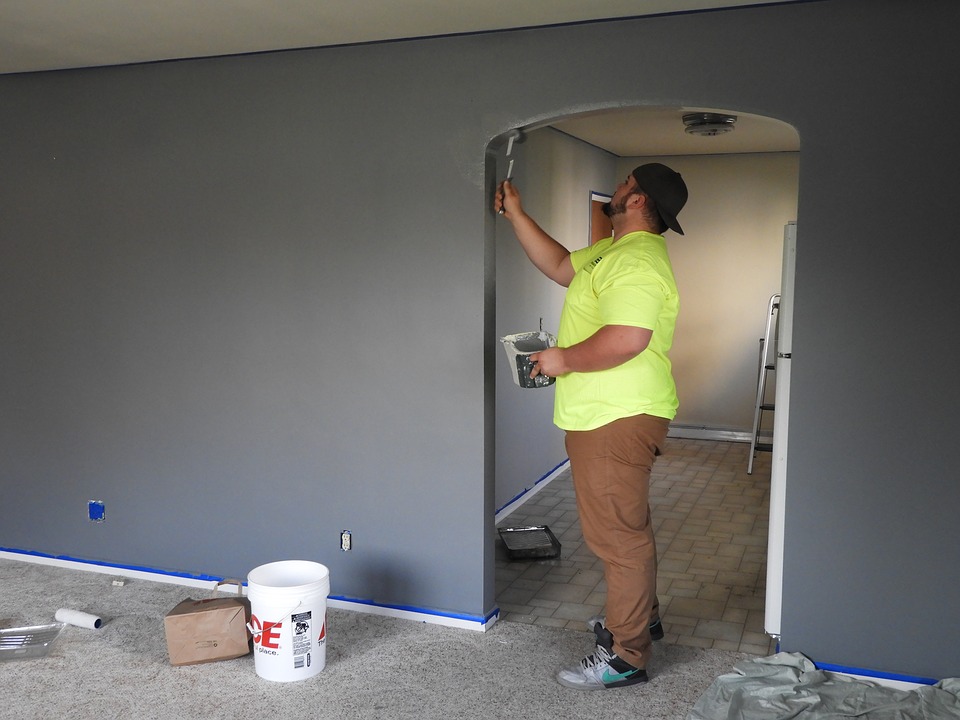Timber flooring evokes an inimitable look of style and elegance. Through the years, thousands of homes have made use of wood to complement interior designs. With natural textures and a wide array of shades and colours, there’s a lot that can be done to create bespoke flooring with timber. Nowadays, stains and finishes are available to create a unique look with wood floors, each with different properties that enhance different aspects of your chosen timber. And while unfinished flooring offers its own charm, with its surfaces sanded and natural shades preserved, it’s important to remember that timber flooring is at a higher risk of damage if an appropriate protective finish is not applied to it.
If you’ve decided on protecting your new timber floors with the right finish, it’s time to figure out if you want to use a stain, too. A stain is a great way to really make your floors your own, and emphasise the qualities of your chosen wood species while making it easier to complement your personal style and your chosen interior design. From yellows, reds, greys, and chocolate browns, it opens up a world of possibilities to get the exact look that you want. Once floor sanding and polishing has been done, staining is an optional process that can be added prior to using your chosen flooring finish, so it’s important to decide whether or not you’re after a specific look, as the appearance of stains can vary depending on the flooring finish that you choose to use, from satin lacquer, matte, to high gloss.
Below, we’ve got a handy list of stain types and flooring finishes to help you learn more about what goes into staining and finishing timber flooring!
Solvent or Oil Based Stain
Oil based stains dry quickly as compared to other stains, and don’t raise the grain as much as a water based stain. Most of these stains are made using linseed oil and mineral turpentine, which is good for timber as it feeds the wood and prevents it from drying out. This reduces the risk of splitting.
Oil-based stains have been used for many years, though with recent environmental concerns, have slowly been phased out for water-based stains with a low VOC.
VOC
Paint companies have started the shift towards water based products as solvent based stains, paints, and compounds can give off VOCs, or volatile organic compounds, as they dry. These have been found to have adverse health risks, and are also ozone depleting, issues which water based stains do not have.
Water Based Stain
Water based stains have been found to be a more environmentally-friendly option for staining wooden floors. Because the base of this stain is mostly water, harmful chemicals that are emitted as it dries are drastically reduced, which means that it’s better for people and the ozone layer. Latest technological advancements have made it so that naturally occurring oils have been incorporated into more and more water based stains to help nourish the timber as well.
Limewash
Wanting a more natural stained look, while still keeping the natural charm of the timber flooring? Limewash is a great way to add some subtle colour to your wooden floors, while unifying the grain on timber with a deeper grain structure. Limewash used to be made just with lime, water, and colour pigments, creating a paste that is easy to apply to wood. There are now easier ways to create and apply limewash available on the market, however, with paint and stain companies offer limewash in liquid form, and in standard colours that can be used to ensure a uniform stain throughout larger flooring spaces.
As with all stains, it’s recommended to seal the floor with an appropriate finish once dry.
Black Japan
Made from bitumen that has been mixed with mineral turpentine, it’s a rapidly drying paint that can be built up over several applications. This used to be fashionable in the Victorian era, and was used to create a striking, decorative contrast between the walls and the rugs used in the rooms. While it has a high gloss appearance, it is susceptible to scratches from foot traffic if not sealed with the right finish. Nowadays, there are other ways to emulate this look without using Black Japan, and it’s easy to scratch surfaces that emit VOCs.
Clear Coating
Clear coats are what is usually applied to stained wood to ward off dirt and fading due to foot traffic. It’s important to remember that clear coatings need to match the stain types used. For oil based stains, oil based clear coats need to be used, just as for water based stains, water based clear coats are your best bet.
Satin Lacquer Finish
Easy to clean and durable, satin lacquer boasts an even sheen that complements most stains and shades on timber. These are especially effective in areas where lighting is limited, as the satin lacquer finish helps light to reflect gently off the flooring for a more spacious and fresh look.
Matte Flooring Finish
Not a fan of glossy floors? Matte lacquer finishes are the best choice for your project if you’re wanting to lean into that natural charm that timber floors provide while still protecting the surface from wear and tear. It’s virtually invisible, letting the innate elegance of the wooden flooring shine through, so it’s no question that it’s a popular choice for many homeowners and builders. Because of its properties, flooring finished with matte lacquer has a look that is similar to oil based finishes, with an easier maintenance routine that ensures your floors are looking their best for the years to come.
So what’ll it be?
It can be daunting to figure out stains and finishes, especially when you’re new to working with timber floors. Make sure to seek the advice of Melbourne timber flooring experts who have the expertise and know-how of working with an extensive range of timber solutions, so you know you’re making the right choice of colour and sheen level for your flooring needs.



